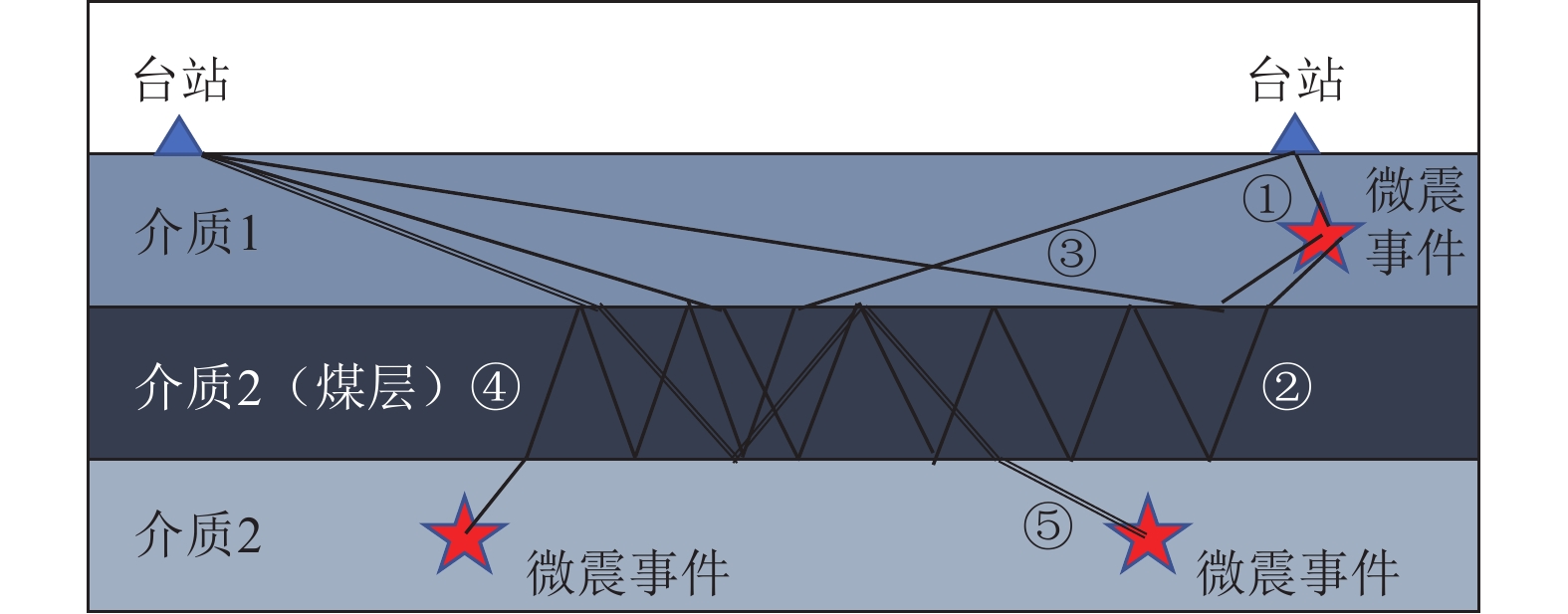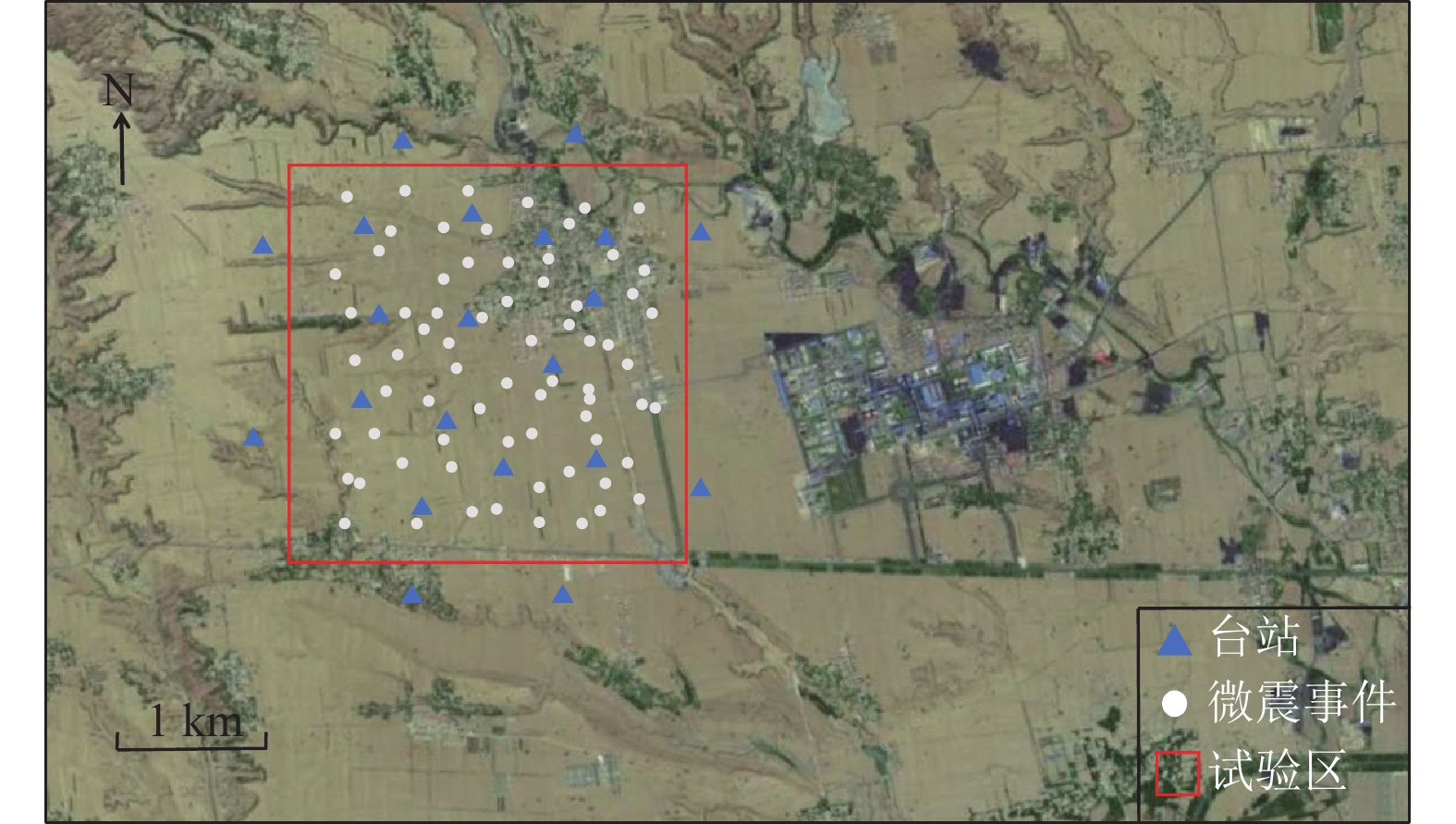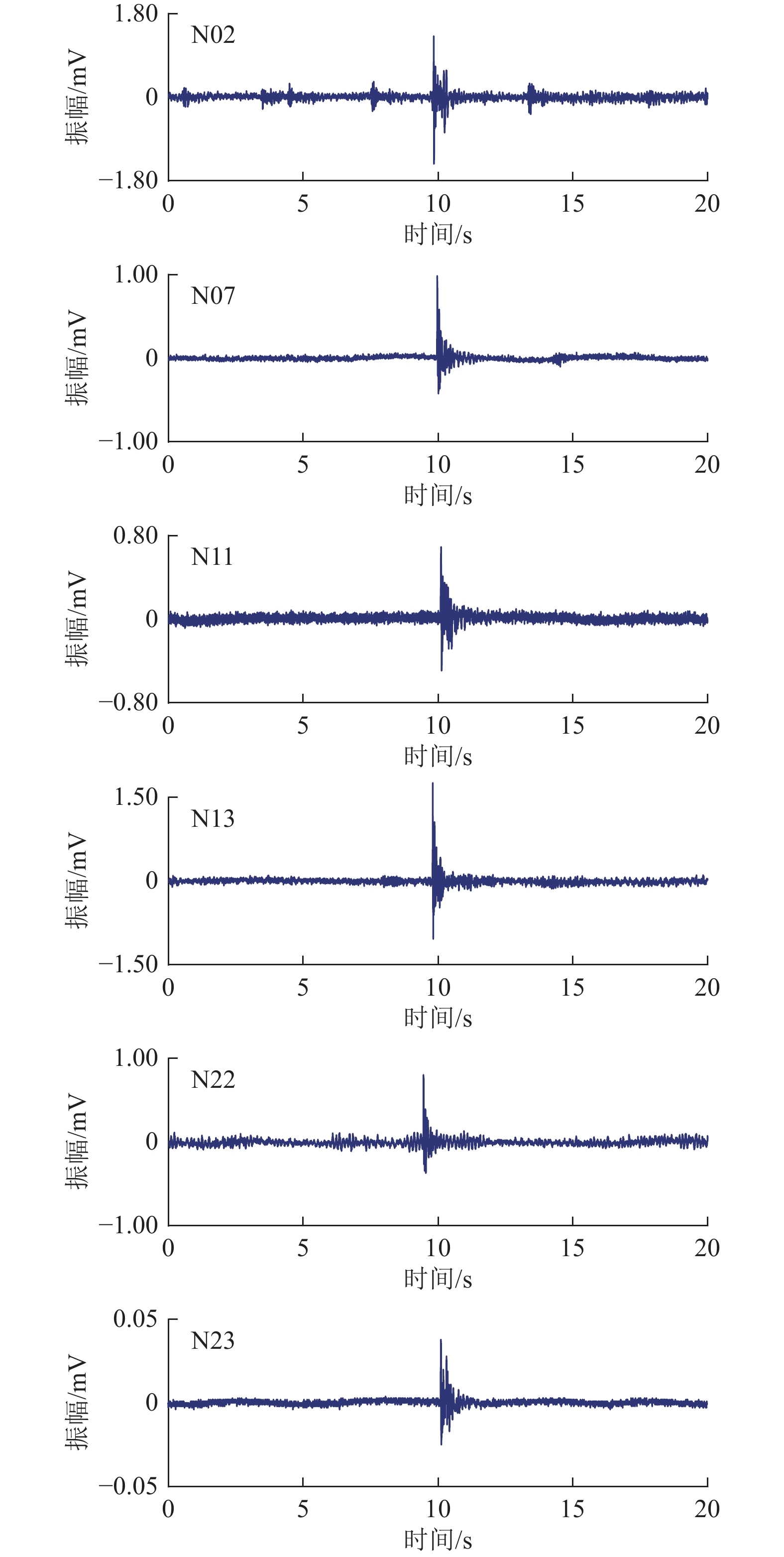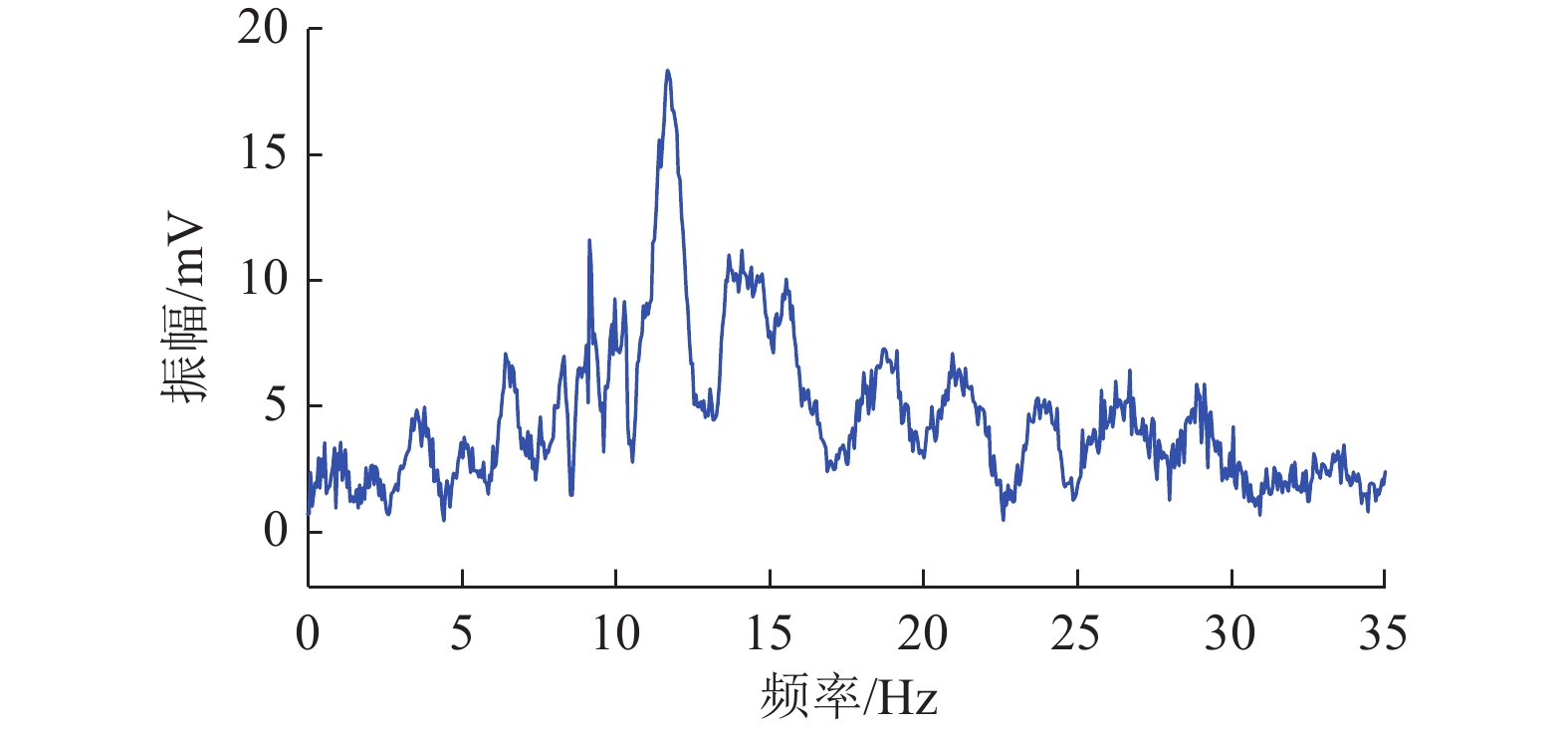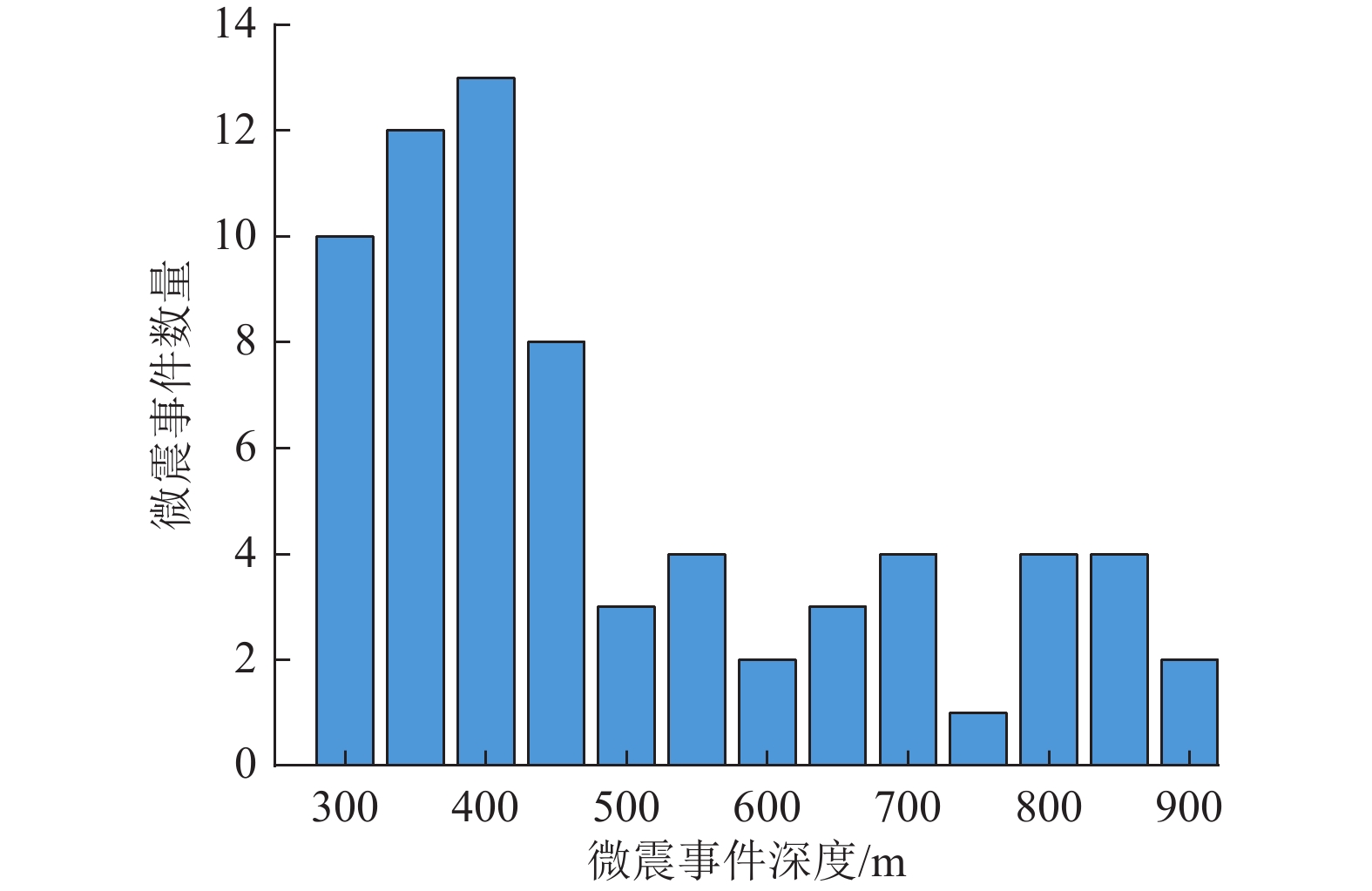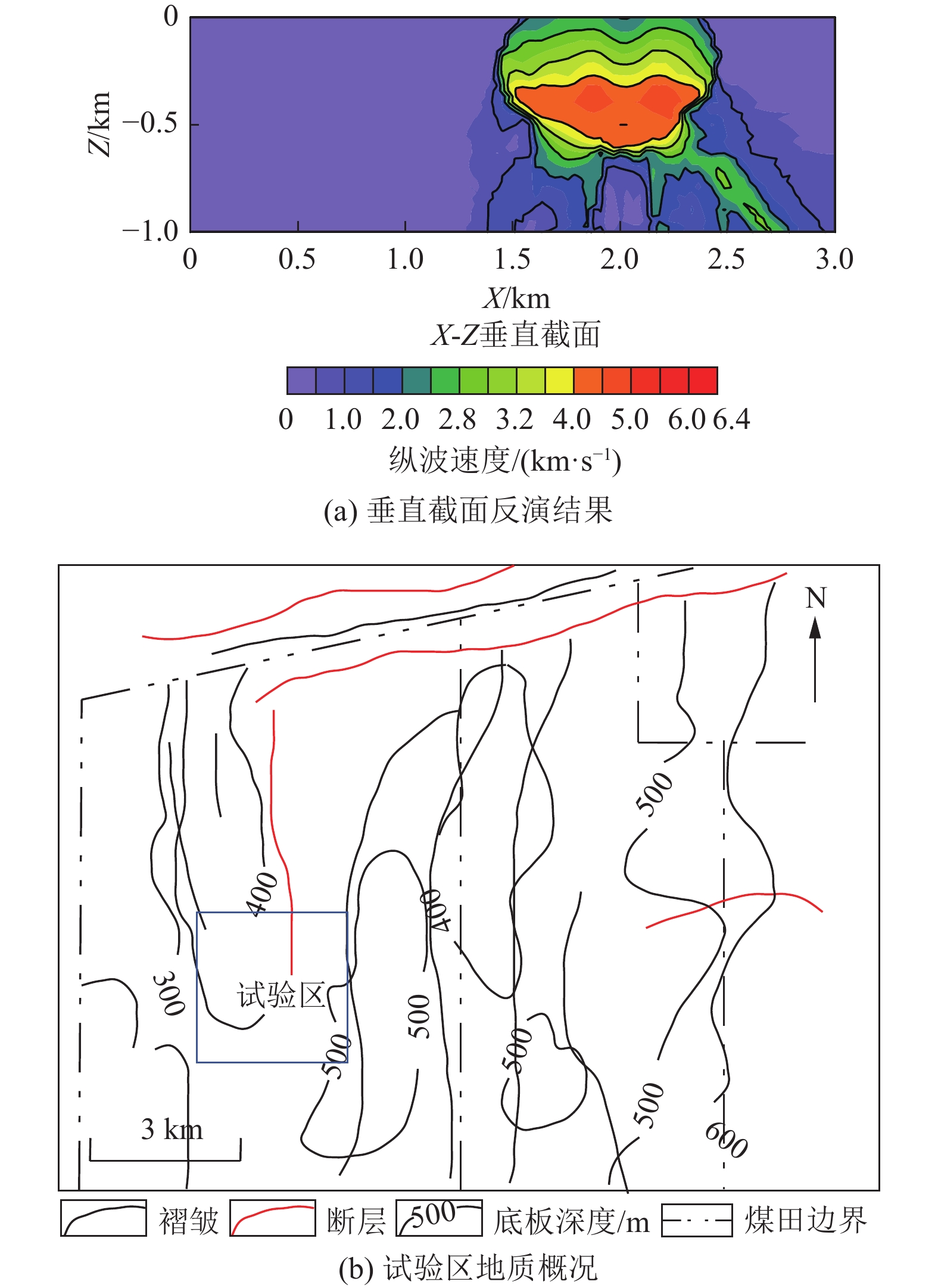Influence of high in-situ stress areas in the coal seam roofs on microseism-based tomographic inversion
-
摘要:
为满足煤矿安全生产的需求,针对煤层顶板高地应力区域易诱发煤矿冲击地压等动力灾害问题,利用微震台站实时传输数据,采用快速三维层析反演算法对煤岩层波速进行反演,从而实现对高地应力区域的实时监测和快速预警。层析反演结果的精度直接决定了高地应力区域的判断,因此,通过建立三维地质模型,分析微震事件空间分布的不同以及高地应力区域与煤层顶板的间距对层析反演结果的影响,并将该方法在某矿区进行了试验。试验结果表明:(1) 由于地震波在煤层和围岩中的传播规律不同,微震事件在煤岩层空间分布不同会降低探测高地应力区域的精确度;(2) 煤层顶板与高地应力区域间距过小时,高波速区域附近所产生的波速梯度会影响低速区域,导致反演结果中煤层位置不清晰;(3) 通过筛选微震事件使其均匀分布以及合理的布置微震地面观测系统可以有效的提高数据完整度和反演精度。研究结果为基于微震的快速三维层析反演技术探测煤层顶板高地应力区域提供理论依据。
Abstract:High in-situ stress areas in the coal seam roofs are prone to induce mine dynamic hazard such as rock bursts. To meet the demand for safe coal mining, this study achieved real-time monitoring and swift early warning of high in situ stress areas. Specifically, based on data transmitted from microseismic stations in real time, this study conducted the inversion of the wave velocities in coal seams and rocks using a fast three-dimensional (3D) tomographic inversion algorithm. The accuracy of tomographic inversion results directly determines the judgment on the locations of high in situ stress areas. Therefore, by building a 3D geological model, this study analyzed the influence of different spatial distributions of microseismic events and the spacing between high in situ stress areas and the coal seam roofs on the tomographic inversion results. Furthermore, the method used in this study was tested in a certain mining area. The test results are as follows: (1) Due to different propagation patterns of seismic waves in coal seams and surrounding rocks, the different spatial distributions of microseismic events in coal seams and rocks can reduce the detection accuracy of high in situ stress areas; (2) In the case of too small spacing between high in situ stress areas and the coal seam roofs, the wave velocity gradients near areas with high wave velocities will affect areas with low wave velocities, leading to unclear coal seam locations in the inversion results. (3) The data integrity and inversion accuracy can be effectively improved using evenly distributed microseismic events and rationally arranged microseismic surface observation system. The results of this study will provide a theoretical basis for detecting high in situ stress areas through microseism-based fast 3D tomographic inversion.
-
Keywords:
- microseism /
- in-situ stress /
- tomography /
- coal seam /
- roof
-
-
图 1 煤岩应力−波速曲线(据文献[23],修改)
Fig. 1 Stress vs. wave velocity curves of coals (Modified according to reference No.23)
表 1 三维地质模型物性参数
Table 1 Physical parameters of the 3D geological model
岩性 纵波速度 vP/(m·s−1) 横波速度 vS/(m·s−1) 上方围岩 3000 1700 煤层 1800 1100 下方围岩 3000 1700 高地应力区 4200 2400 -
[1] MU Zonglong,LIU Guangjian,YANG Jing,et al. Theoretical and numerical investigations of floor dynamic rupture:A case study in Zhaolou Coal Mine,China[J]. Safety Science,2019,114:1−11. DOI: 10.1016/j.ssci.2018.12.016
[2] 贺永胜,王启睿,刘恩来,等. 深部岩体地应力分布及测试技术研究进展[J]. 防护工程,2021,43(4):71−78. HE Yongsheng,WANG Qirui,LIU Enlai,et al. Research progress on in–situ stress distribution and testing technology of deep rock mass[J]. Protective Engineering,2021,43(4):71−78.
[3] 韩军,张宏伟. 淮南矿区地应力场特征[J]. 煤田地质与勘探,2009,37(1):17−21. DOI: 10.3969/j.issn.1001-1986.2009.01.003 HAN Jun,ZHANG Hongwei. Characteristic of in−situ stress field in Huainan Mining Area[J]. Coal Geology & Exploration,2009,37(1):17−21. DOI: 10.3969/j.issn.1001-1986.2009.01.003
[4] 高明忠,王明耀,谢晶,等. 深部煤岩原位扰动力学行为研究[J]. 煤炭学报,2020,45(8):2691−2703. GAO Mingzhong,WANG Mingyao,XIE Jing,et al. In–situ disturbed mechanical behavior of deep coal rock[J]. Journal of China Coal Society,2020,45(8):2691−2703.
[5] 宫凤强,潘俊锋,江权. 岩爆和冲击地压的差异解析及深部工程地质灾害关键机理问题[J]. 工程地质学报,2021,29(4):933−961. GONG Fengqiang,PAN Junfeng,JIANG Quan. The difference analysis of rock burst and coal burst and key mechanisms of deep engineering geological hazards[J]. Journal of Engineering Geology,2021,29(4):933−961.
[6] 张重远,吴满路,陈群策,等. 地应力测量方法综述[J]. 河南理工大学学报(自然科学版),2012,31(3):305−310. ZHANG Chongyuan,WU Manlu,CHEN Qunce,et al. Review of in–situ stress measurement methods[J]. Journal of Henan Polytechnic University (Natural Science),2012,31(3):305−310.
[7] 刘文剑,吴湘滨,王东. 水压致裂法测量裂隙岩体的地应力研究[J]. 煤田地质与勘探,2007,35(3):42−45. LIU Wenjian,WU Xiangbin,WANG Dong. Study on the geo−stresses measurement of fracture rock−mass with hydro−fracturing of borehole[J]. Coal Geology & Exploration,2007,35(3):42−45.
[8] 徐帅,韩明飞,李家后,等. 相对地应力测量设备现状及发展趋势[J]. 金属矿山,2021(2):1−8. XU Shuai,HAN Mingfei,LI Jiahou,et al. Current situation and development trend of relative geostress measurement equipment[J]. Metal Mine,2021(2):1−8.
[9] 刘少伟,樊克松,尚鹏翔. 空心包体应力计温度补偿元件的设计及应用[J]. 煤田地质与勘探,2014,42(6):105−109. LIU Shaowei,FAN Kesong,SHANG Pengxiang. Design and application of temperature compensating element of hollow inclusion stress gauge[J]. Coal Geology & Exploration,2014,42(6):105−109.
[10] 唐超,李庶林,周梦婧,等. 基于微震监测的应力场反演方法及其工程应用研究[J]. 岩土工程学报,2021,43(9):1730−1738. TANG Chao,LI Shulin,ZHOU Mengjing,et al. Stress inversion based on microseismic monitoring and its engineering application[J]. Chinese Journal of Geotechnical Engineering,2021,43(9):1730−1738.
[11] 李楠,王恩元,GE Maochen. 微震监测技术及其在煤矿的应用现状与展望[J]. 煤炭学报,2017,42(增刊1):83−96. LI Nan,WANG Enyuan,GE Maochen. Microseismic monitoring technique and its applications at coal mines:Present status and future prospects[J]. Journal of China Coal Society,2017,42(Sup.1):83−96.
[12] 张平松,刘盛东,吴荣新. 地震波CT技术探测煤层上覆岩层破坏规律[J]. 岩石力学与工程学报,2004,23(15):2510−2513. ZHANG Pingsong,LIU Shengdong,WU Rongxin. Observation of overburden failure of coal seam by CT of seismic wave[J]. Chinese Journal of Rock Mechanics and Engineering,2004,23(15):2510−2513.
[13] MAXWELL S C,YOUNG R P. Seismic imaging of rock mass responses to excavation[J]. International Journal of Rock Mechanics and Mining Sciences & Geomechanics Abstracts,1996,33(7):713−724.
[14] 王书文,毛德兵,杜涛涛,等. 基于地震CT技术的冲击地压危险性评价模型[J]. 煤炭学报,2012,37(增刊1):1−6. WANG Shuwen,MAO Debing,DU Taotao,et al. Rockburst hazard evaluation model based on seismic CT technology[J]. Journal of China Coal Society,2012,37(Sup.1):1−6.
[15] CAO Anye,DOU Linming,LUO Xun,et al. Seismic effort of blasting wave transmitted in coal–rock mass associated with mining operation[J]. Journal of Central South University,2012,19:2604−2610. DOI: 10.1007/s11771-012-1317-6
[16] 蔡武,窦林名,李振雷,等. 矿震震动波速度层析成像评估冲击危险的验证[J]. 地球物理学报,2016,59(1):252−262. CAI Wu,DOU Linming,LI Zhenlei,et al. Verification of passive seismic velocity tomography in rock burst hazard assessment[J]. Chinese Journal of Geophysics,2016,59(1):252−262.
[17] 郭来功,戴广龙,杨本才,等. 基于微震成像的采煤工作面应力异常监测[J]. 浙江大学学报(工学版),2018,52(10):2014−2022. GUO Laigong,DAI Guanglong,YANG Bencai,et al. Stress anomaly monitoring of coal face based on microseismic tomography[J]. Journal of Zhejiang University (Engineering Science),2018,52(10):2014−2022.
[18] 康红普,伊丙鼎,高富强,等. 中国煤矿井下地应力数据库及地应力分布规律[J]. 煤炭学报,2019,44(1):23−33. KANG Hongpu,YI Bingding,GAO Fuqiang,et al. Database and characteristics of underground in−situ stress distribution in Chinese coal mines[J]. Journal of China Coal Society,2019,44(1):23−33.
[19] FRIEDEL M J,SCOTT D F,WILLIAMS T J. Temporal imaging of mine−induced stress change using seismic tomography[J]. Engineering Geology,1997,46(2):131−141. DOI: 10.1016/S0013-7952(96)00107-X
[20] YOUNG R P,MAXWELL S C. Seismic characterization of a highly stressed rock mass using tomographic imaging and induced seismicity[J]. Journal of Geophysical Research,1992,97(B9):12361−12373. DOI: 10.1029/92JB00678
[21] 巩思园,窦林名,徐晓菊,等. 冲击倾向煤岩纵波波速与应力关系试验研究[J]. 采矿与安全工程学报,2012,29(1):67−71. GONG Siyuan,DOU Linming,XU Xiaoju,et al. Experimental studyon the correlation between stress and P–wave velocity for burst tendency coal–rock samples[J]. Journal of Mining & Safety Engineering,2012,29(1):67−71.
[22] 薛雅荣,宋大钊,何学秋,等. 突出煤岩纵波波速与应力相关关系[J]. 西安科技大学学报,2019,39(5):826−835. XUE Yarong,SONG Dazhao,HE Xueqiu,et al. Correlation between longitudinal wave velocity and stress in outburst coal–rock[J]. Journal of Xi’an University of Science and Technology,2019,39(5):826−835.
[23] 邓志刚,王宏伟,蒋军军,等. 不同冲击倾向性煤岩纵波波速与应力相关关系研究[J]. 煤矿安全,2020,51(11):24−28. DENG Zhigang,WANG Hongwei,JIANG Junjun,et al. Study on relationship between P–wave velocity and stress of coal rocks with different impact tendency[J]. Safety in Coal Mines,2020,51(11):24−28.
[24] AGHAEI O, RIAHI M A,NADRI D. Velocity model determination in seismic lines via traveltime inversion in the Ahwaz oil field[J]. Earth & Space Physics,2004,30(1):15−21.
[25] 王鹏,常旭,王一博,等. 井中微震监测观测系统优化设计[J]. 科学技术与工程,2016,16(30):61−67. WANG Peng,CHANG Xu,WANG Yibo,et al. Optimization design of borehole–based microseismic monitoring geometry[J]. Science Technology and Engineering,2016,16(30):61−67.
[26] 冯磊,董郑,周明奂,等. 基于时频域极化滤波的勒夫型槽波提取[J]. 煤田地质与勘探,2016,44(3):103−108. FENG Lei,DONG Zheng,ZHOU Minghuan,et al. Love channel wave extraction based on polarization filter in time–frequency domain[J]. Coal Geology & Exploration,2016,44(3):103−108.
[27] 曹颖,钱佳威,黄江培,等. 利用时移层析成像方法分析2014年云南景谷MS6.6地震震源区的P波速度变化[J]. 地震地质,2021,43(6):1563−1585. DOI: 10.3969/j.issn.0253-4967.2021.06.012 CAO Ying,QIAN Jiawei,HUANG Jiangpei,et al. P–wave velocity changes in hypocenter region of the 2014 Jinggu MS6.6 earthquake using time–lapse tomography based on double–difference tomography[J]. Seismology and Geology,2021,43(6):1563−1585. DOI: 10.3969/j.issn.0253-4967.2021.06.012








 下载:
下载:




